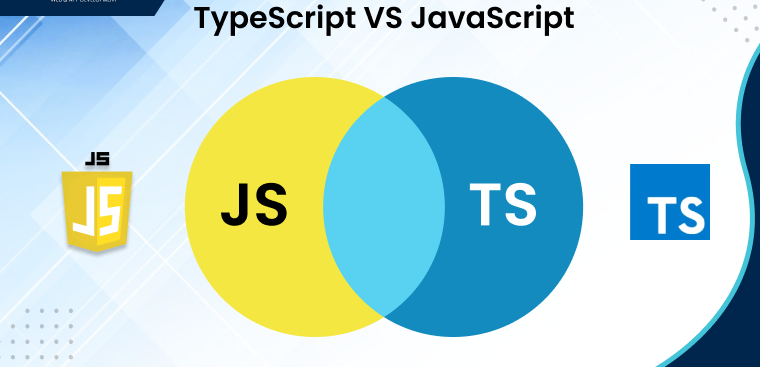JavaScript vs TypeScript: Choosing the Right Language for Your Project
JavaScript and TypeScript are both popular programming languages used for web development. While JavaScript is the de facto language of the web, TypeScript has gained significant traction among developers due to its static typing and enhanced developer experience. In this blog post, we will compare JavaScript and TypeScript, exploring their similarities, differences, and factors to consider when choosing the right language for your project.
Syntax and Compatibility
JavaScript is a dynamic scripting language that is widely supported by all modern web browsers. It has a straightforward and flexible syntax, making it easy to learn and write code. On the other hand, TypeScript is a superset of JavaScript that introduces static typing. TypeScript code is transpiled into JavaScript, ensuring compatibility with existing JavaScript codebases and browsers. TypeScript’s syntax is similar to JavaScript, with the addition of optional type annotations.
Static Typing
One of the primary distinctions between JavaScript and TypeScript is static typing. JavaScript is dynamically typed, meaning variable types are determined at runtime. This flexibility allows for rapid prototyping and quick iterations. TypeScript, on the other hand, introduces static typing, enabling developers to specify variable types at compile-time. Static typing catches potential errors during development and provides better code maintainability and documentation. It also facilitates code refactoring and IDE features like autocompletion and code navigation.
Tooling and Developer Experience
TypeScript offers excellent tooling support, particularly with IDEs like Visual Studio Code. TypeScript’s static type system enables powerful code analysis, intelligent suggestions, and advanced refactoring tools. The TypeScript compiler provides detailed error messages, helping developers identify and fix issues early in the development process. JavaScript also has a wide range of tools and libraries available, but its dynamic nature can make certain tasks, such as refactoring and large-scale codebases, more challenging.
Ecosystem and Libraries
JavaScript has a vast and mature ecosystem with a multitude of libraries, frameworks, and resources. It has been around for decades and is widely adopted in web development. TypeScript, being a superset of JavaScript, seamlessly integrates with existing JavaScript libraries and frameworks. Additionally, TypeScript has its own ecosystem of type definitions (typings) for popular JavaScript libraries, enhancing the development experience. However, some newer or niche libraries may have limited or outdated TypeScript support.
Visual Studio vs Visual Studio Code: Understanding the Differences Between These IDE Code Editors
Learning Curve and Adoption
JavaScript’s simplicity and ubiquity make it accessible for beginners and experienced developers alike. Learning JavaScript can be relatively fast, and resources and community support are abundant. TypeScript introduces additional concepts, such as static typing and type annotations, which can require some learning and adjustment, especially for developers transitioning from JavaScript. However, TypeScript’s popularity is rapidly increasing, and its benefits make it a valuable skill in the job market.
Project Size and Complexity
The size and complexity of your project can influence the choice between JavaScript and TypeScript. For small projects or quick prototypes, JavaScript’s dynamic nature and rapid development speed may be sufficient. However, for larger and long-term projects, TypeScript’s static typing can provide better code organization, maintainability, and scalability. The additional upfront time invested in defining types can save debugging time and improve code quality in the long run.
Performance and Execution
JavaScript, being a dynamically-typed language, offers faster execution speed due to its just-in-time (JIT) compilation. The absence of type checking during runtime allows for quick interpretation and execution of code. TypeScript, on the other hand, introduces an additional step of static type checking during compilation, which can result in a slight performance overhead. However, modern JavaScript engines have made significant optimizations, and the performance difference between JavaScript and TypeScript is negligible in most cases.
Community and Support
JavaScript has a massive and active developer community, making it easy to find resources, tutorials, and support. It has a long-standing history and a wide range of frameworks like React, Angular, and Vue.js that are widely adopted and well-documented. TypeScript, being a relatively newer language, has a growing community and strong support from Microsoft. It has gained popularity in enterprise projects and among developers who prioritize type safety and code quality.
Compatibility with Existing Codebase
If you have an existing JavaScript codebase, migrating it to TypeScript can be a gradual process. TypeScript allows for incremental adoption, meaning you can start by adding type annotations to existing JavaScript files without rewriting the entire codebase. This compatibility and ease of migration make TypeScript a viable choice when you want to introduce static typing and leverage its benefits in an existing JavaScript project.
Team Collaboration and Hiring
When considering team collaboration and hiring, the availability of skilled developers should be a factor. JavaScript, being a widely-used language, has a larger pool of developers with experience in the language. It may be easier to find JavaScript developers, especially for smaller or less specialized projects. However, TypeScript’s rising popularity and its advantages in terms of code maintainability and scalability make it an attractive skill for developers and can be an asset when hiring for larger or enterprise-level projects.
JavaScript and TypeScript are both powerful languages with their own strengths and use cases. JavaScript’s ubiquity, simplicity, and flexibility make it suitable for various web development scenarios. TypeScript, with its static typing, enhanced developer experience, and growing ecosystem, excels in larger codebases and projects that prioritize maintainability and scalability.
Consider factors such as project size, developer experience, tooling requirements, and the benefits of static typing when choosing between JavaScript and TypeScript. Ultimately, the decision should align with your project’s specific needs and the preferences and skillsets of your development team.

